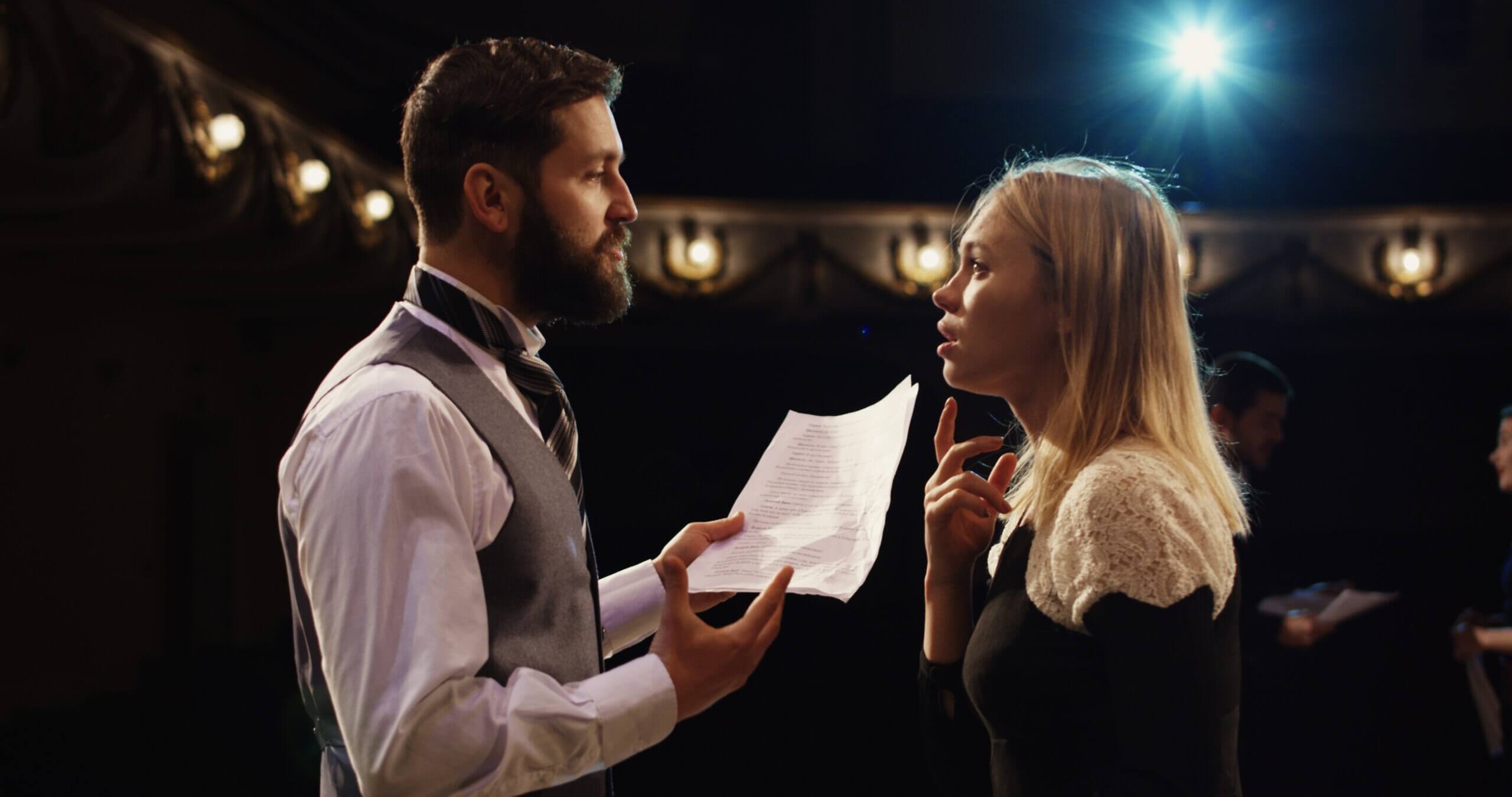
The Kids Are All Right star Annette Bening shared a personal story with a group of theater students about her difficulty with listening early on in her training. An acting instructor had critiqued her performance with a scene partner, telling Bening, “Look, you’re used to kind of going up there and doing your thing, but you’re not really taking in what’s happening. You’re not taking in your partner. And what he’s doing is not affecting you because you’re just doing your thing. You’re not listening; you’re not really taking in what’s happening.”
Bening found this assessment of her work to be quite embarrassing at the time, but she knew the teacher was speaking the truth. So from that point on, she focused her efforts on truly listening. To date, Bening has been nominated for an Oscar four times.
During auditions, it’s not just about the way actors deliver their lines. Focused, active listening, as well as compelling reactions, make a performance come alive.
From a director’s perspective, such attentiveness demonstrates that the actor is consistently engaged throughout the scene, allowing for quality reaction shots in the editing room, which is essential for creating powerful scenes on screen. In other words, actors’ listening skills make them far more likely to be hired.
Insights: Quick Tips for Active Listening
- Actively listen to scene partners for more authentic, engaging performances.
- Practice listening exercises regularly to boost focus and responsiveness.
- Eliminate distractions and avoid half-listening during auditions and rehearsals.
Obstacles to Active Listening
The modern world has a way of eroding people’s ability to listen attentively. Phones ring, music plays in the background, and conversations are abbreviated because of time constraints.
While listening to others, people often underestimate the impact of quick glances at the TV or brief interruptions to check their text messages — this can be described as half-listening. And even if technology isn’t interfering with communication, individuals have a tendency to pay attention just enough to plan a response — another form of half-listening. These habits affect personal relationships, sadly, but they also zap an actor’s power in the audition room and on set.
Practice Makes Perfect
Like any other skill, active listening must be developed. Strengthening these abilities at home and with friends will make it easier to keenly focus on a scene partner’s performance and promote fresh, tuned-in responses. Here are four exercises to help connect with others more deeply and genuinely:
1. No Interrupting
For this exercise, two people sit opposite one another. They select one person to be the speaker and one to be the listener.
The speaker must talk about a topic that is important to them for about three minutes. The whole time, the listener quietly listens and cannot speak at all.
After the speaker finishes, the listener paraphrases what was said as best they can. At this point, the speaker can clarify any misunderstandings or confirm the accuracy of the listener’s words.
This activity helps the listener build patience, as they are required to absorb the information and resist interrupting. This trains the listener to stop thinking about what they’d like to say next, and instead focus fully on the person in front of them.
It also helps the listener practice and improve their reflection abilities. Then it’s time for the speaker and listener to switch roles.
2. Draw What You Hear
Two people sit back-to-back, both with a paper and pencil in front of them. One person is designated the questioner and the other is the responder. Without the questioner being able to see, the responder first creates a drawing using a variety of simple geometric shapes on a piece of paper.
Once the drawing is completed, the questioner asks questions, one at a time, about the shapes the responder drew on their paper. Listening carefully, the questioner then takes those answers and draws the design they believe they’re hearing be described. Once completed, the two participants compare the likeness of their drawings.
This activity bolsters a person’s ability to ask pertinent questions and to seek clarifications to better understand a subject.
3. Hearing Opposing Points of View
Two people choose a specific topic about which they have opposing points of view. From start to finish, the tone of the exercise is a friendly exchange as opposed to a debate or confrontation.
Speaking one at a time, both participants voice their opinions for a designated period of time and patiently and respectfully listen to one another. The idea is to attentively absorb the information and to ask clarifying questions in order to gain insights into the reasons for the opinion.
This exercise is easier said than done. It requires both participants to be fully present while promoting a habit of listening without the need for anyone to be “right” or “wrong.”
The goal is ultimately to understand where the other person is coming from and to have a fruitful conversation with another regardless of differing opinions. Also, a person might actually gain a deeper understanding of the topic at hand.
4. Train of Thought
This activity can accommodate a small group. The first participant speaks for a minute about a specific topic. The second individual summarizes those words and then adds any thoughts about the subject.
Each remaining participant continues this pattern of summarizing the words of every individual who came before them, and always adds their own thoughts at the end. This exercise requires attentive listening skills, effective summarizing, and collaboration.
Active listening is a vital skill for actors that sets great performances apart. Annette Bening’s experience shows how truly tuning in can elevate your work and boost your chances of success. Like any skill, attentive listening can be improved with practice. To recap, here are some quick notes:
- Authentic performances rely on engaged, active listening.
- Distractions and “half-listening” weaken acting.
- Simple listening exercises can sharpen this essential skill.
Want to get your acting career started? Sign up or login to Casting Frontier and start auditioning today!
Related articles:
Working as a Background Actor
The Best Way to Contact Casting Directors
6 Actors’ Motivational Quotes




